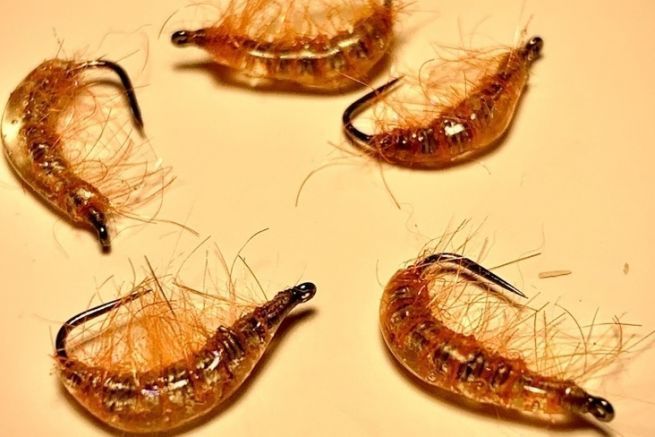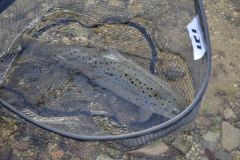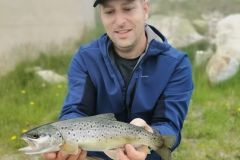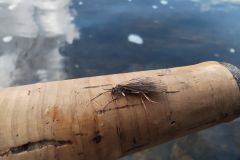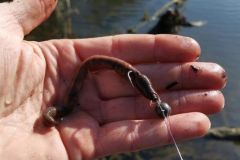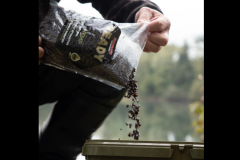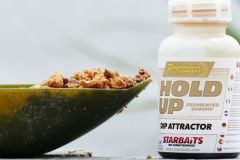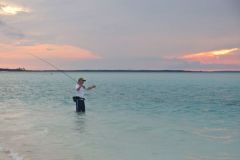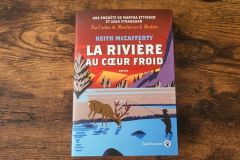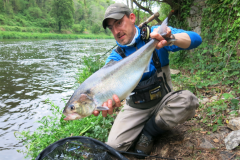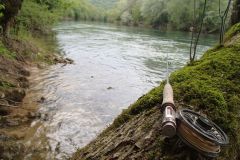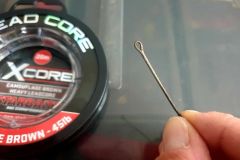There are 21 recorded species of gammarids in France. Depending on the river, the colors can vary (gray, green, orange) and the adult size can range from 1 to 2 cm. These small freshwater shrimps represent in some environments the main food supply of our dear salmonids.
They are responsible for the orange color of the trout flesh because they contain a pigment called astaxanthin which resists digestion and is fixed on the muscle tissues. The set-up that I present here will have to be declined to get closer to the species present on your fishing grounds.
It will be enough to adapt the size of the hook and the color of the dubbing used. It is an orange version that I present here and that I particularly like because of the strong propensity of trout to discern this tone.
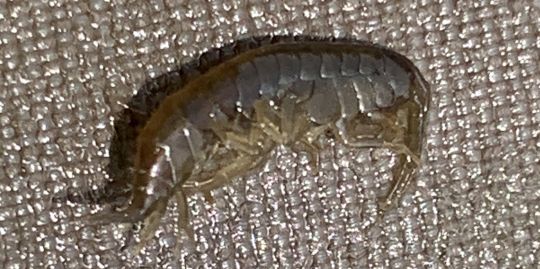
List of materials
1) To begin with, the choice of your dubbing will depend on the color and the contrast you will give to your gammare. Here the Mouche de Charrette UV cross dubbing is used to accentuate the orange contrast and to obtain an increased visibility.
2) The transparent silicone strips will be useful to solidify the assembly.
3) Lead wire will help to densify the assembly and will be to measure according to the volume of water (it is essential to decline its nymphs in several densities to apprehend all the situations).
4) A reel of 12/0 mounting silk. Here the Nano Silk from Semperfli which offers interesting possibilities compared to a classic silk (we will see why later).
5) Clear UV coating resin. Here, the famous GULFF Thinman resin whose viscosity is well suited to this assembly.
6) Finally, hooks of 12 with a large opening and a small shank (sometimes called caddis hooks), here the reference C47 without barb (thus C47BL) from Caleri Fly Fishing.
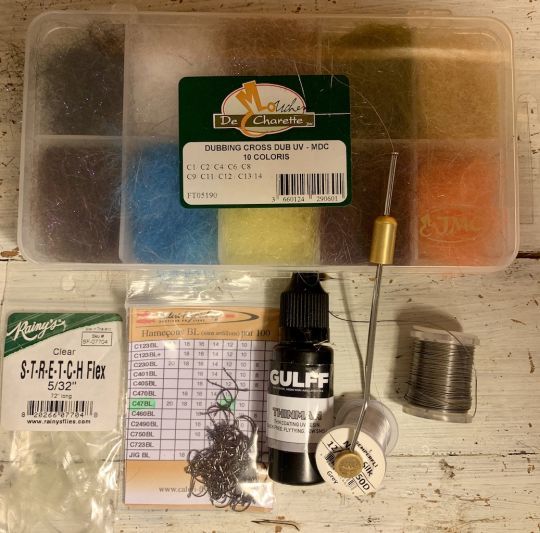
Fixing and sealing of lead
The lead is fixed by wrapping it around the hook just in front of the bend of the hook. We will continue the winding more or less close to the eyelet depending on the density we want to obtain.
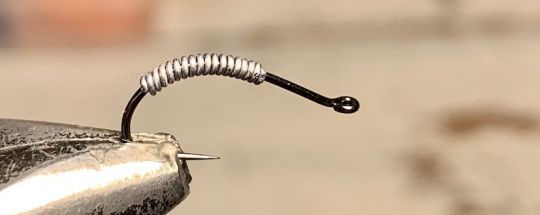
A drop of varnish is placed on the lead wrap and allowed to set into the mount before curing with the UV lamp. This allows to seal the step and bring more solidity to the final assembly.
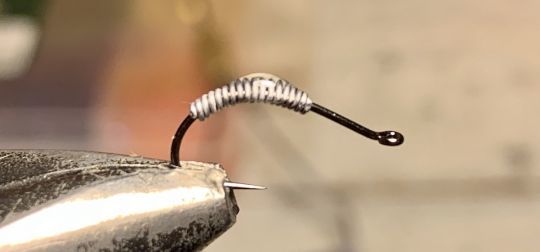
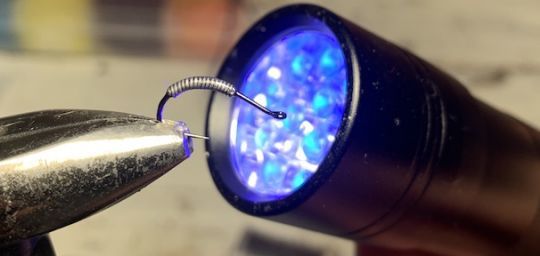
Fixing and rolling up the latex
After covering our previous step with mounting silk we come to fix a latex band at the back.
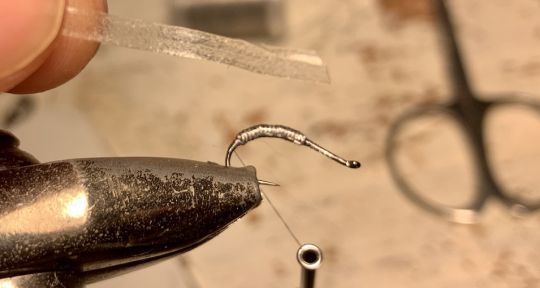
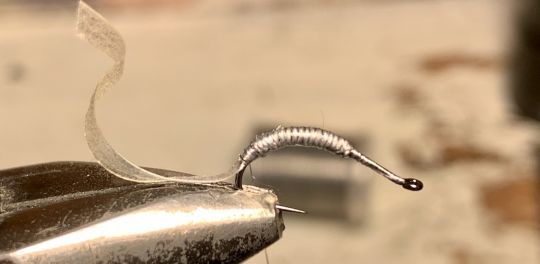
We then roll it up to the eyelet to fix it there.
The purpose of this step is to soften the sharpness of the angle between the hook and the lead, to give volume to the body of the gammarin, to solidify the whole and to offer a support for the UV varnish for the continuation of the assembly.
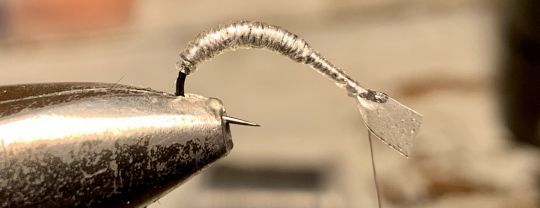
The realization of the dubbing
We return to the back of the assembly to make the dubbing which will give its color to the gammare and it is there that the choice of the silk of assembly takes its direction.
Semperfli's Nano Silk, beyond its amazing resistance, allows, when unwinding it, a separation of the fibers that compose it and therefore to include materials in the silk without using a dubbing loop. The latter has the disadvantage of doubling the thickness of the assembly line to achieve a dubbing, whereas with this silk the strand is separated into 2 and you can therefore achieve much finer windings and obtain a neat result on small hooks.
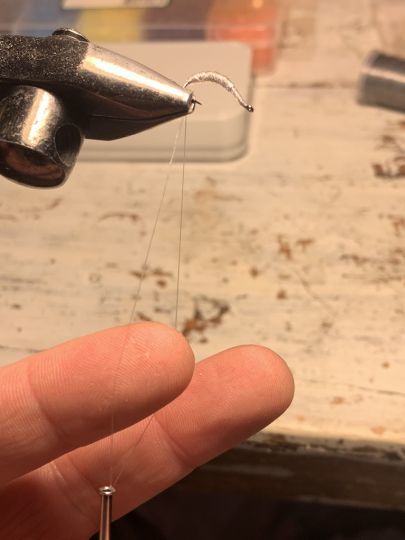
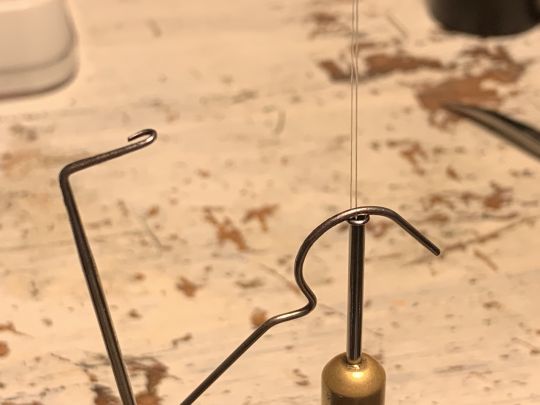
We include the fibers between the 2 silk threads and we twist the whole by turning the spool holder. For this assembly, it is advisable to keep long fibers and thus to carry out a relatively shaggy dubbing.
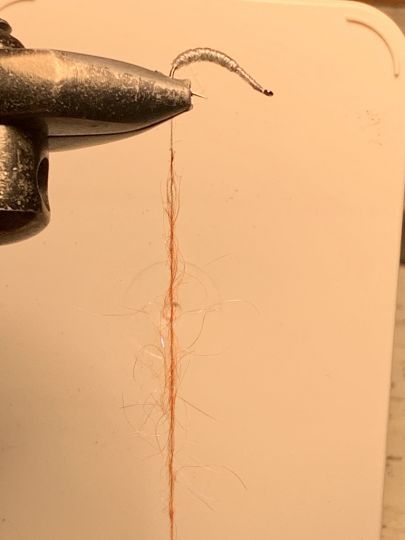
We then wind towards the eyelet by making ample turns (especially not joined).
We make a stopper knot just behind the eyelet as if to finish a fly and we cut the tying line.
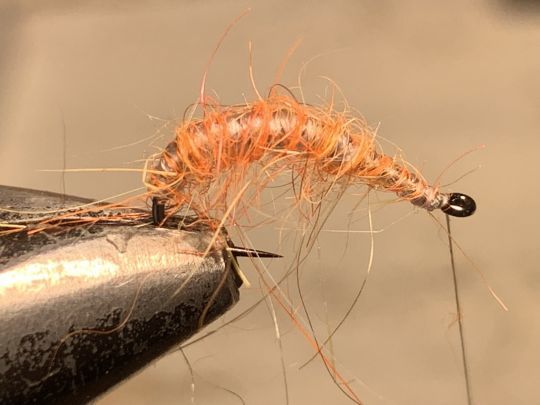
The vernissage
We place the dubbing towards the bottom of the fly with the help of the index finger and the thumb (by moistening the fingers it is even better). We then place the fibers that will imitate the legs of our gamma and release the back to place the varnish.
We start with a thin layer that we will polymerize immediately and that will serve as a support for the rest of the varnish.
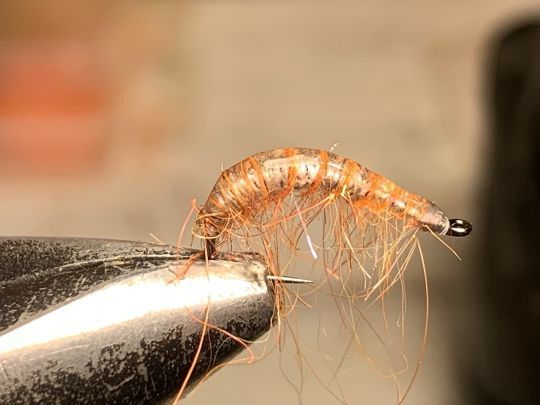
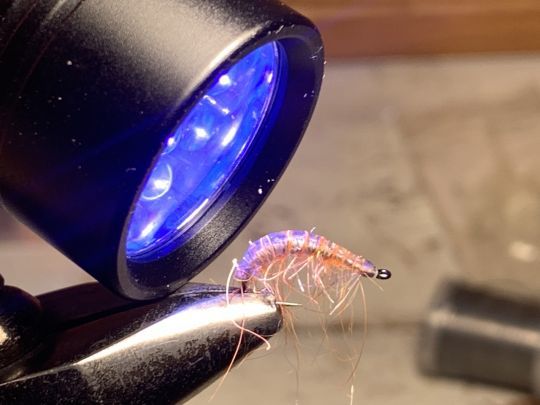
The fly is then turned over by rotating the head of the vise. The eyelet upwards and thus the bend of the hook downwards.
Finally, we put some varnish on the head of the fly which, by gravity, will flow towards the curvature of the hook and form the bulging body of the gammare, drop by drop, polymerizing each time until the desired volume is obtained.
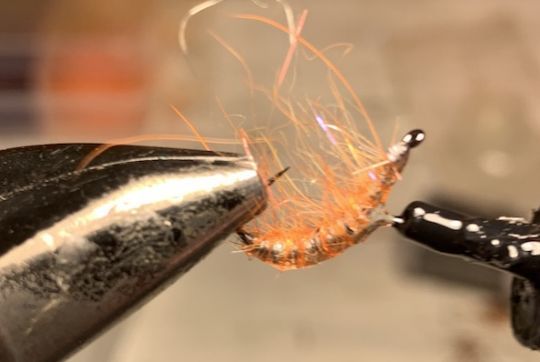
We will finish by cutting the dubbing fibers to adjust the length of the legs and the trick is done.
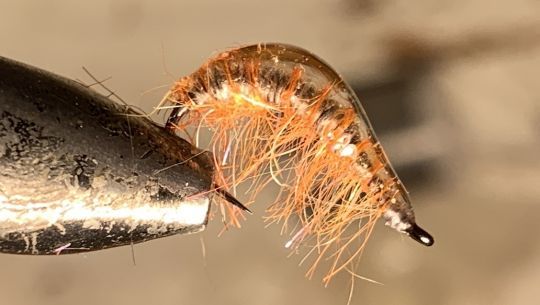
I hope you have fun with this simple and effective rig and that it brings you as many fish as I had the pleasure of catching with it.
